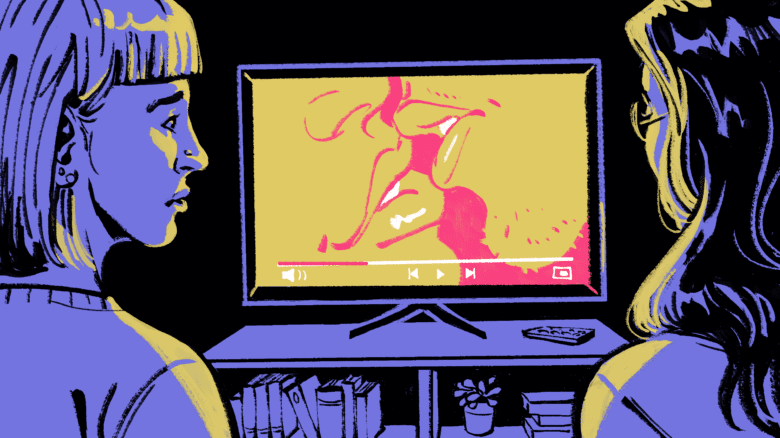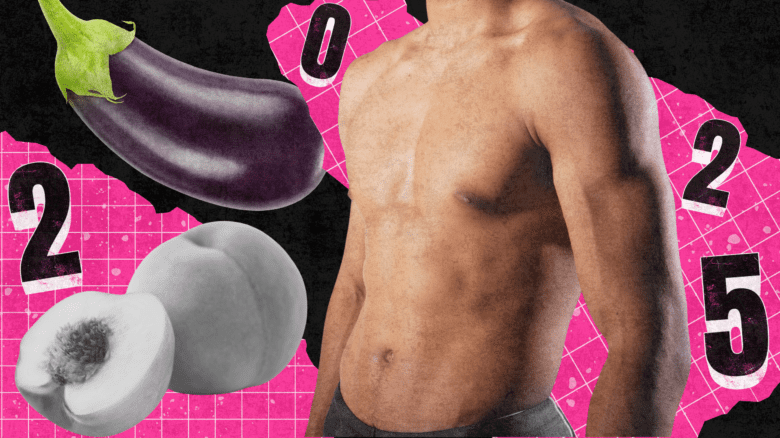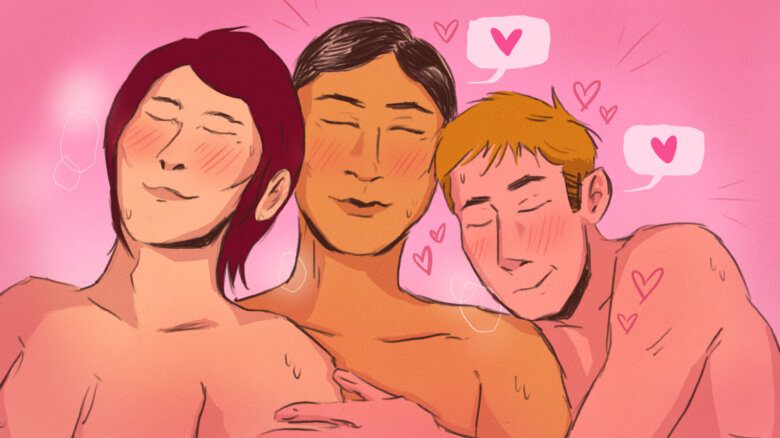Twenty minutes into The L Word pilot, I was pretty sure I was gay.
I watched as Jenny, the straight-but-questioning main character, spied on two naked women in her neighbours’ pool. As she accidentally caught a glimpse of lesbians making out from between the gaps in her garden fence, her shock quickly turned into curiosity. Like Jenny, I couldn’t look away. Her voyeurism and intrigue became mine.
I had discovered The L Word at school after indelicate Grade 9 boys with Showcase subscriptions boasted about a new late-night lesbian show. Of course, I had pretended not to hear for fear that any signs of interest would be suspicious.
It would take another year before I mustered up the courage to finally watch it — under my blanket, on a laptop, with headphones on, usually after making sure my West African parents weren’t roaming.
I quickly became enthralled with this group of Hollywood women who looked nothing like me. I fell in love with the friendships between them, laughed at inside jokes about a lesbian culture I knew nothing about, and, like everyone else, lusted after the womanizing but effortlessly charming character Shane. I desperately wanted to belong.
My confusion and curiosity surrounding my sexuality had grown too loud for me to neglect. With no real-world examples for me to compare myself to, I hoped to see myself reflected in the world of The L Word and recognize it as mine.
“With no real-world examples for me to compare myself to, I hoped to see myself reflected in the world of The L Word and recognize it as mine.”
In reality, one couldn’t walk more than two blocks in Los Angeles before encountering someone like me: queer, androgynous, Black, woman-loving. But as a closeted 15-year-old, I indulged in a world that was unrealistically absent of women like me. Besides the white-passing main character Bette and her haphazardly-written sister Kit, The L Word presented me with a version of queer womanhood centered around white, cisgender lesbians. It wasn’t just that women like me weren’t featured — these women didn’t love anyone who looked like me, either.
The women in The L Word had cafés and book clubs. They found love in jails and museums and sperm donor parties and on TV sets. But where did women who looked like me love? Where were the women who’d love me?
“But where did women who looked like me love? Where were the women who’d love me?”
The L Word, in its sensuality, forced me to acknowledge that I was gay. By the end of the first season, though, I still wasn’t sure I was allowed to be. I loved the show for the glimpse it gave me into what I thought could be my future — and of course, the sex scenes — but because I wasn’t there, it was easy to conclude that I didn’t belong. Being both Black and gay still felt like an anomaly in the place where I searched for myself hardest.
Then, a week after I had wolfed down the entire first season of The L Word, I discovered The Wire. It would be in this unlikely setting of David Simon’s gripping crime drama where I found a piece of myself in Detective Kima Greggs.
Kima was a shining star in the boys’ club that is the Baltimore Police Department, a kickass Black woman in a sea of white men. As Black woman are rarely depicted as having a seat at the table, this portrayal was a remarkable feat in itself. But not as much as the scene where Kima returned home to her Black partner Cheryl and they exchange a routine kiss that nonetheless felt revolutionary.
For marginalized people with multiple intersections, we find ourselves in pieces scattered across pop culture. I saw myself in precocious Black girls like Rudy Huxtable in The Cosby Show, or sloppy Black women like Denise Huxtable in A Different World, or newly-out lesbians like The L Word’s Jenny, but Kima from The Wire was the first time I had seen queerness, womanhood and Blackness intersect on my screen.
“Kima from The Wire was the first time I had seen queerness, womanhood, and Blackness intersect on my screen.”
The L Word was the first step in recognizing my queerness, but the characters I loved didn’t seem to love me. Detective Kima Greggs felt like a love letter to me from creator David Simon himself: the luxury of seeing myself wholly reflected in one character.
Before that, I had never seen, met or read about any Black lesbians. Kima was the first time that I realized that my existence was a possibility.
The Wire quickly became one of my all-time favourites, for reasons other than Kima. But her existence was always a bonus. She was always a character, never a caricature. Sure, she was flawed and a subpar partner, but there she was. The Wire didn’t play into the trope of presenting gay people without giving them an opportunity to be intimate. Kima and Cheryl were physical, soft, angry, unfair, judgemental — they had the freedom to run the full emotional range of a committed relationship. They made a loving future seem possible.
“Kima was the first time that I realized that my existence was a possibility.”
Before I discovered Kima and Cheryl, I had no assurances that it would get better or that relationships were possible for me. The shame that I had held so tightly around my gayness began to loosen, and it was because of this small part of a crime drama that I began to see the possibility of loving and being loved by women who look like me.
The Wire never made any overt statements about queerness, but introduced people outside the scope of their sexuality before revealing their queerness. The character Omar Little initially projects Black hypermasculinity, first introduced as an infamous stick-up artist who terrorizes Baltimore drug dealers with his sawed-off shotgun before he sits on a stoop, his arm casually strung around his gay lover Brandon.
When Omar is later brought to the morgue to identify his partner’s body, he breaks down, hugs, and kisses Brandon one last time. I had never seen a masculine, Black, gay man on television before, especially one allowed to be out and soft but still feared and respected.
While watching The Wire, I learned I didn’t have to choose between being Black and being gay. I rewatched scenes of Omar and his partners, Kima and Cheryl, and later latched on to Felicia “Snoop” Pearson, a ‘stud’ or a Black masculine lesbian introduced in the third season. These characters were able to exist outside of their queerness while still acknowledging their queerness as integral to their being. Snoop gangbanged, Omar robbed and Kima excelled as a lead detective, putting forth the message that their sexuality was a natural part of their lives rather than a detriment.
“While watching The Wire, I learned I didn’t have to choose between being Black and being gay.”
I’ve yet to see myself wholly reflected on television. I’m still waiting for a great Black lesbian show where our characters have their own stories, rather than just furthering someone else’s narrative. I’m still waiting for a show where nonbinary Black folks exist as protagonists or a show with more than one token character on-screen at a time. Though we are getting closer, with works such as the Emmy–award winning “Thanksgiving” episode of Master of None — which traces the androgynous-looking character Denise’s coming-out story through past Thanksgiving dinners with her Christian mother, there are pieces of me I hope to find in pop culture yet to be created.
I will always love The L Word, and I excitedly await its reboot in hopes that queer people of colour have finally found a seat at that table. But it’s detective Kima Greggs in The Wire that made me exhale for the first time. With instances of representation like this, I became a little stronger, surer of myself, less ashamed. With each story, I found another reason to watch television out from under the blanket of my adolescent fears.
I realized I had been waiting for permission to exist — and that permission is freely given every time I find a piece of myself.



 Why you can trust Xtra
Why you can trust Xtra


